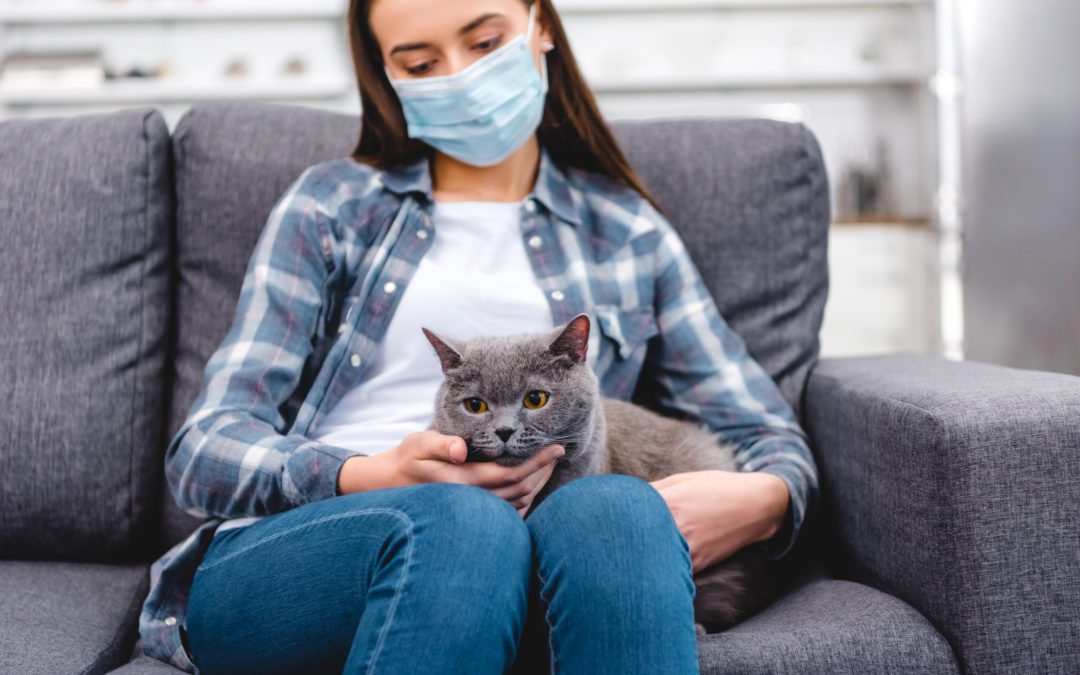As a respiratory illness, COVID-19 spreads through the air. According to the CDC, the virus is primarily communicable through respiratory droplets, which every person creates when they cough, sneeze or speak. If these droplets are infected with COVID-19, then they risk spreading that infection to another person by way of inhalation or other contact, such as someone touching a surface covered with infected droplets and then touching their mouth, nose, eyes, or face. Out in public, there are best practices you can use to minimize your risk of infection, such as wearing a mask, washing or sanitizing your hands regularly, or not touching your face. In the home or workplace, though, you might start to wonder: can COVID-19 spread through the HVAC system?
HVAC Systems and the Spread of COVID-19
Because COVID-19 can spread from one person to another through the air, it stands to reason that some people are worried that HVAC systems could provide a potential pathway for the virus as well. If you own a standalone home and have mostly been isolating with your immediate family, then there’s probably not much reason to worry. However, for those living in apartment buildings where HVAC systems for different units are interconnected, or for those heading back to work in crowded office buildings, there are probably some real concerns. The same is true for schools, especially as the fall draws nearer and nearer.
So what’s the answer? Can HVAC systems contribute to the spread of COVID-19?
Unfortunately, there is a lot that we do not know about this novel coronavirus yet. Among the unanswered questions is whether any viral spread has occurred by way of an HVAC system. However, that fact—that there have been no reported or confirmed cases of COVID-19 spreading via a ducted air conditioning or heating system—should be encouraging. In this article on the subject, William Bahnfleth—who is both a professor at Pennsylvania State University and a member of the American Society of Heating, Refrigerating and Air-Conditioning Engineers (ASHRAE)—makes a good point. As Bahnfleth says, there has been no shortage of articles, scholarly papers, news bulletins, and other resources about COVID-19 published since the pandemic began. None of those resources includes any documented evidence that COVID-19 has spread through an HVAC system, or that such a mechanism of spread is even possible.
HVAC systems indeed circulate and recirculate air throughout a space. This cycle of air movement is a core tenet of how air conditioning and heating work. There is always a chance that a virus could end up in the ducts and be recirculated through the HVAC system along with the rest of the air in a house, commercial space, or school. However, HVAC systems also typically incorporate systems designed to remove impurities from the air, including infrastructure for filtration and ventilation. If your home or business HVAC system has proper filtration and ventilation, then the chances of your HVAC system being able to move COVID-19 (or any other virus, for that matter) from one part of the building to the next are decidedly slim.
What about the China Case?
Those who are convinced that coronavirus can spread through an HVAC system will generally cite a case in Guangzhou, China, where the air conditioning in a small restaurant was blamed for spreading COVID-19 to multiple families. In one investigation of the incident, researchers argued that the “airflow direction in the restaurant was consistent with droplet transmission.” However, a subsequent (more detailed) study has found that the restaurant in question was very poorly ventilated, which would have contributed to the dangerous recirculation of contaminated air throughout the space.
The China case, though it’s been presented by some as proof that COVID-19 can be spread by air conditioning, is just proof that the spread of this novel coronavirus is more likely in cramped spaces without much ventilation. We already knew this fact, of course: there’s a reason why outdoor gatherings have been so much less restricted than indoor gatherings. In an open-air space, COVID-19 particles disperse faster, hence the lower risk of contamination outside.
The other thing the China case proves is that ventilation and filtration are crucially important aspects of a building’s HVAC system. Getting your HVAC system serviced, and the ducts and vents thoroughly cleaned will maximize airflow and preserve ventilation. Being vigilant about changing out your furnace filter, meanwhile, will not only help in the fight against COVID-19 but will also improve air quality throughout your home or building as a whole. Both are worthwhile pursuits to take right now and regularly going forward. Pandemic or no pandemic, fresh, uncontaminated air is always better for you than air laden with viruses, bacteria, mold spores, allergens, or other impurities. Contact your HVAC technician today to schedule your next service or duct cleaning.

